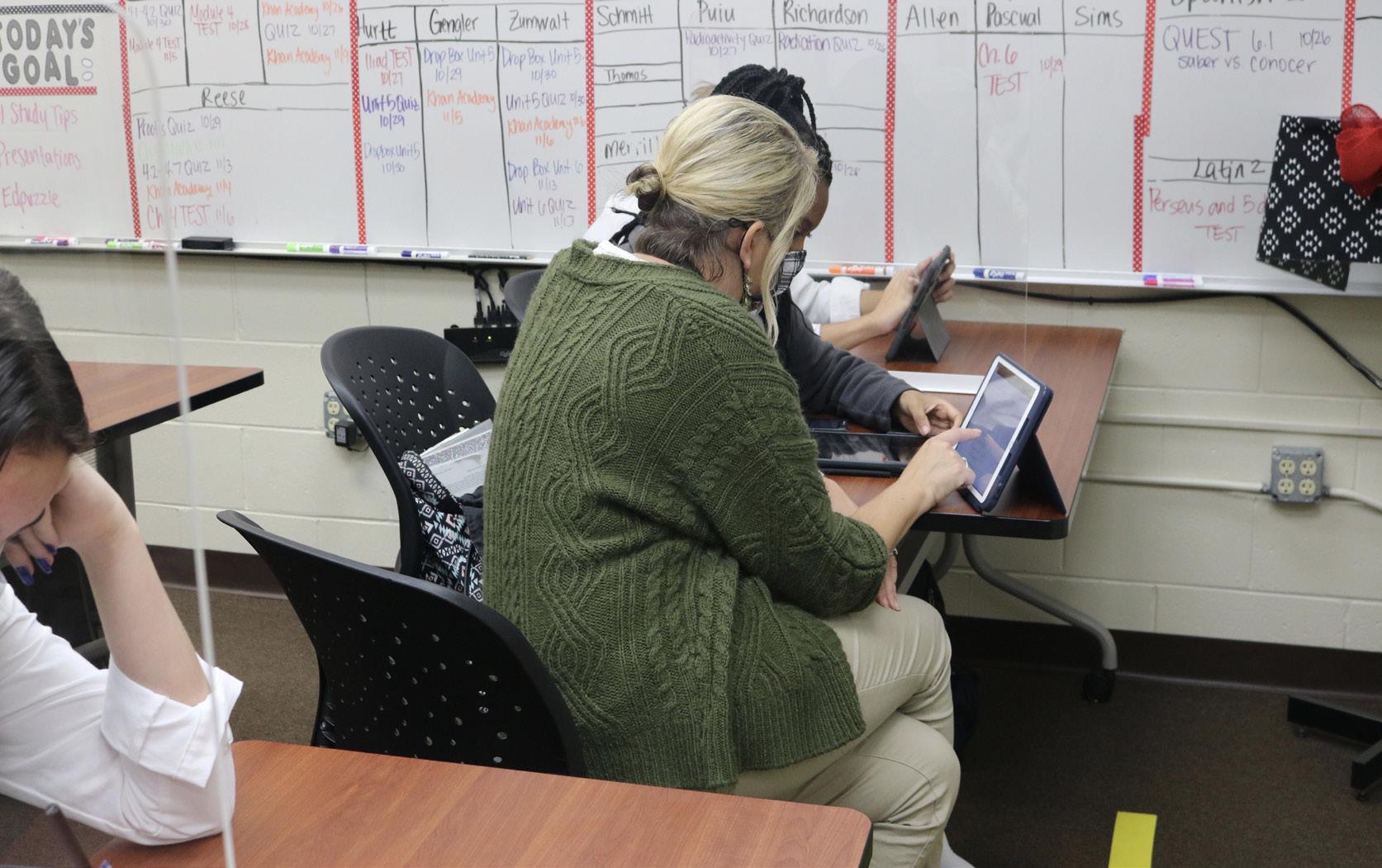
4 minute read
LEARNING RESOURCE PROGRAM
THROUGH DIFFERENT LENSES Learning Resource Program offers additional help to students Abigail Parker | Copy Editor
In the United States, public schools are required to have a program called exceptional student education (ESE). Since Congress passed a federal law requiring special education programs in 1975, many policies have been enacted to ensure that every student has equal learning opportunities. It is, however, difficult to have programs like ESE in college preparatory schools because of how fast-paced the curriculum is; that is where LRP comes in. At Bishop Kenny, the Learning Resource Program, known as LRP, helps students who learn differently achieve academic success.
According to Academic Dean Michael Broach, LRP is similar to an ESE program in which students with learning differences are provided reasonable accommodations, or adjustments, to help with their studies or social behaviors and prepare them for life after school.
LRP is a four-year program in which students take an elective course for the first two years of high school called Applied Communications 1 and 2. In this class, students work on study strategies, effective use of a planner and communication skills.
“It [LRP] is designed for students who learn differently that need that additional assistance,” Broach said. “They are getting one-on-one assistance with a teacher for all
ACADEMIC DEAN MICHAEL BROACH
of their other subjects.”
LRP Director Jennifer Richardson has taught Applied Communications 1 and 2 for three years at BK, and has 16 years of ESE teaching experience.
“We’ve worked together to try to figure out how we can meet the needs of our students to where they can
reach their full potential,” Richardson said.
Richardson keeps up with each student’s class schedule and writes down when they have tests, quizzes and big projects to help them keep track of it all. “The first few weeks are strictly spent organizing things on the iPad, in backpacks and using the planner,” Richardson said. “The planner can be one spot where everything is at.”
She also teaches her students test-taking strategies, organization skills, study strategies, reading comprehension and different note-taking skills that they can use in other classes. In order to help her students utilize technology, Richardson says she uses the apps that other teachers use, including Quizlet, Studymate, Quizizz and Flipgrid.
She focuses more on walking the freshmen through it all, while she has the sophomore class demonstrate that they incorporate the strategies they learned. She explains that for the freshmen she does more one-on-one talks about which strategies fit them best. Both Applied Communications 1 and 2 are meant to give the students a place to catch up and prepare for their other classes.
“It’s a time to relax and organize themselves,” said Richardson. “It gives them a minute where they don’t feel so rushed.”
LRP students also take Spanish with May Hotard. Hotard has been teaching LRP Spanish for about 20 years at BK. This year, Hotard has five classes of Spanish 1 and 2, with a limited number of students in each one. She explained that one-on-one instruction is more compatible with smaller class sizes, especially since the capabilities of her students are different each year.
“[My teaching method] actually varies from year to year and the abilities of everybody in class,” Hotard said. “If one thing doesn’t work you try to find another [solution].”
Hotard says she sometimes modifies the amount of time spent on each chapter and “chunks” information rather than scattering it throughout chapters of the book.
“Kids can learn how to get around those [differences] in many cases and be successful in this curriculum,” Hotard said. “The goal is to help them adjust and work within some of the confines they have.”
Students with learning differences also have the Student Support Team, or SST, a program run by Director of School Counseling Jerry Buckley, Vice Principal of Academics Mary DeSalvo and Academic Dean Michael
MAY HOTARD
Broach.
Hotard is part of a new initiative of the SST for this school year. She helps students before and after school and during fleX mod who need assistance planning and organizing their course load.
If a student with a learning difference is not in LRP but needs accommodations, the SST is in charge of approving those. Similar to an IEP that is available in public school, the SST helps students get additional time for test-taking, text-to-speech resources, or even temporary arrangements due to short-term medical disabilities such as a concussion or surgery.
“It’s more of a ‘how can we make this work to help the students?’” Broach said. “Our philosophy here is that we want to meet students where they’re at.”
Spanish Learning Resource Teacher May Hotard teaches her C mod how to conjugate the Spanish word for “we.”

Photos by Sarah Roberts Applied Communications teacher Jennifer Richardson helps a student finish her English homework.











